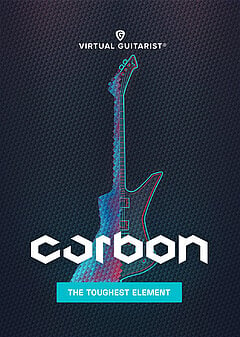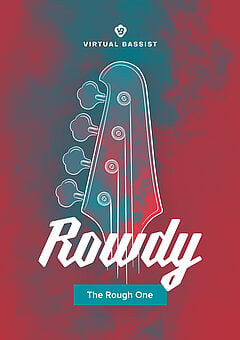How to Create a Metal Riff
How to satisfy your inner metalhead and build a great intro that’s instantly recognizable to your fans, based on the most iconic riffs ever created.
AUGUST 16TH, 2020
There are some metal riffs you can’t hear without letting loose--and that’s exactly the experience you want to create for your fans. The most iconic songs have a unique instrumental opening that keys your listeners into exactly what’s to come. A short musical signature that wastes no time in getting them into the song. This is true of nearly every genre--but metal has a few nuances that make for a catchy riff, to be revealed in this article.
What is a riff in metal?
Wether you are trying to create pop riffs or dive into metal, the fundamentals are the same: On a general level, a riff is a short melodic/chordal phrase with a punchy rhythm that repeats every 1 or 2 measures. In case it’s not obvious yet, in metal the near-exclusive instrument for delivering riffs is the electric guitar.
Any proud metalhead knows that distorted guitars, driving basses and ultra-punchy drums are the lifeblood of the genre. Metal often starts out with a riff in order to punch a unique sonic “stamp” onto the song and whet the listeners’ appetites for the real action. The first few seconds of any song may very well determine whether or not someone listens at all, so we’re going to help you stack the odds of that in your favor as much as possible.
Iconic metal riffs
Andrea Boma Boccarusso delivers an excellent performance in his YouTube video, “20 ICONIC METAL RIFFS”:
If you’re looking for inspiration for metal riffs, this video will never cease to offer excellent guidance. But notice something about the song release dates--they were all between the years 1970 and 1992. This isn’t to say that newer songs can’t become classics, of course--rather, that your best ideas may come from songs written even 50 years ago! Metal has evolved, but the core principles still thrive--keep the rhythms simple, and once you’ve got something good, run with it and don’t look back!
Many of the greatest metal riffs of all time never imply a major or minor tonality--this gives them extra power and punch that tends to be diminished when you involve the third note in the scale. Once the melody comes in this usually changes, but omitting tonality from the lead-in adds a bit of tension since the listener has to wait to hear how the riff resolves. It’s subtle, but the more ways you can involve the listener, the better!
A brief note on power chords: use a lot of them. They’re nearly always viable because they work in any key, and adding the fifth above the root note of the chord generates a lot more power. The only other note that has such a profound effect is doubling octaves, which is why many genres commonly have doubled melody lines either an octave above or below. In this case, “power” simply refers to how much attention-grabbing ability is contained within each chord--power chords are a great hack to get you there more quickly.
What to play
If you’ve read our Pop Riff article, the process described below may seem a bit odd--since it begins the exact opposite way. To create a metal riff on a guitar, you don’t want any other instruments in the mix yet, even percussion. Why? Because many of the most iconic metal riffs start with solo guitar (and there’s a reason for that).
Let’s start with rhythm. A lot of riffs fall into the following (highly unofficial) categories:
- Swung - Walk, by Pantera
- Melodic - Fear of the Dark, by Iron Maiden
- Sustained - Black Sabbath, by Black Sabbath
- Syncopated - Run to the Hills, by Iron Maiden
- Punctuated - Symphony of Destruction, by Megadeth
- Chunked - Painkiller, by Judas Priest
In certain styles of metal riffs, the guitar almost becomes a percussion instrument in its own right. Here’s a good test of whether you’ve nailed your riff creation: Play your guitar riff for some non-musical friends. If they start moving in time to the music without even thinking about it, you know you’ve struck gold. Make sure you don’t add any other instruments into the mix--the guitar riff needs to create this effect on its own. Then when you add other instruments into the mix, you’ll have a very strong opening indeed.
How to play metal riffs on virtual guitars
If you’re looking to inject some classic metal vibes into your music when designing your riffs, try out a free demo of Virtual Guitarist IRON. First, settle on a root note and select it in the “Chords” section on the right--create a MIDI clip and enter the note, extend it out for a couple measures, and set your DAW to loop the entire length of the clip. Now you can experiment effortlessly.
Try changing the Common and Style Phrases up every couple beats--choose any notes you want, as long as they keep the energy up without creating any awkward transitions! Continue playing around until you have a 2 measure, full rhythm you’re happy with. Then go back and change your chords--now that you have the rhythm down, you may find that the right notes seem to suggest themselves. And once you listen to enough must-know metal riffs, this decision-making process becomes almost automatic.
Virtual Guitarist CARBON will give you even heavier results, but note that it’s geared toward film and game composers looking to add dirt to cinematic scores. Nonetheless, it’s another excellent potential tool in your arsenal!
Once you’ve absorbed enough metal riffs that ideas start flowing freely, experiment as quickly as you possibly can. Go with whatever sounds good in the moment, and keep iterating until you finally have a killer metal riff to begin your next song. Keep an open mind about your influences--your source of inspiration might even be 50 years old!
Stay Up To Date
Sign up and we’ll send you an e-mail with product news and helpful stuff every now and then.
Defy Limits
We develop software solutions that enable people to create, consume and interact with music.



